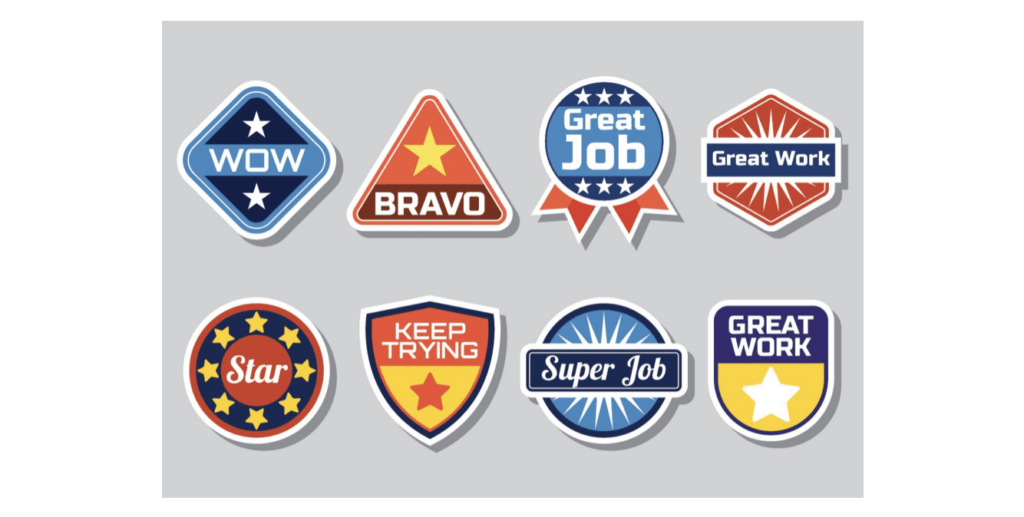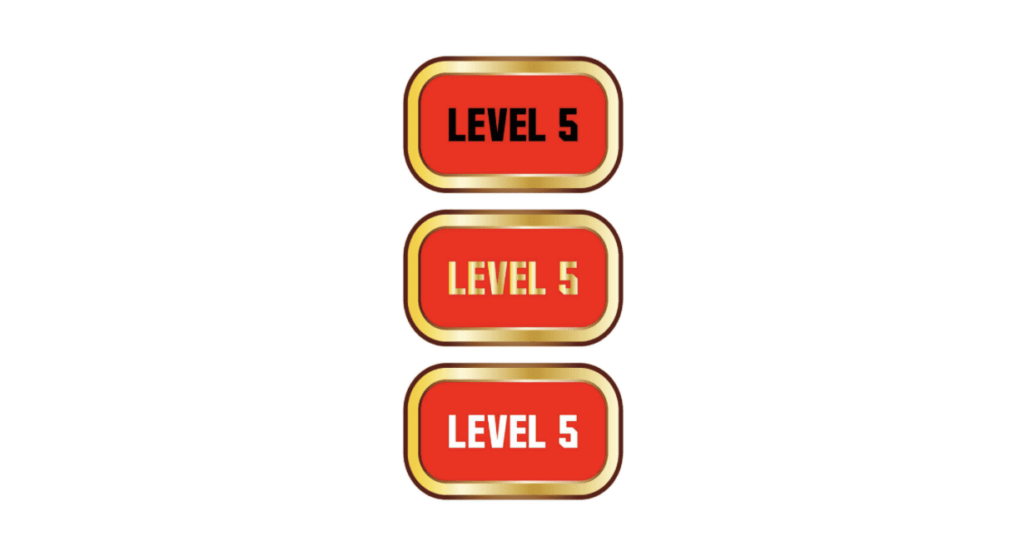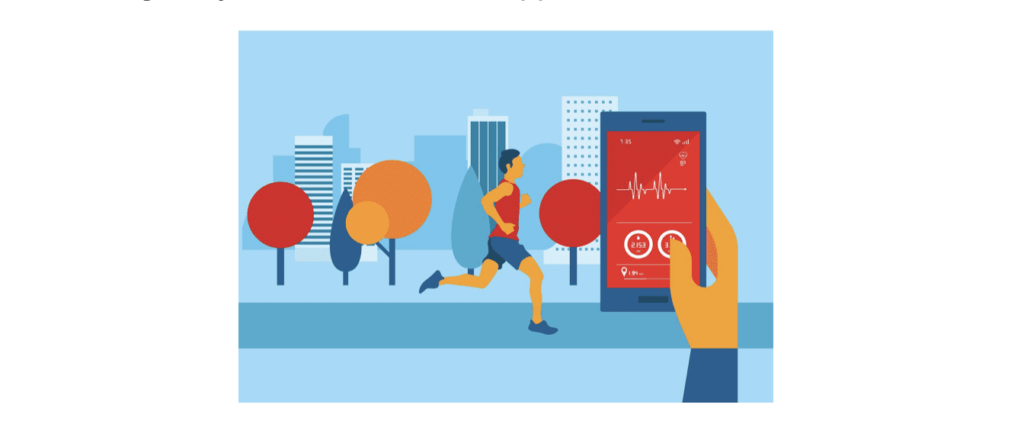
How To Gamify Your Mobile App
One of the best ways to improve user engagement is to gamify your mobile app. However, you might wonder, “How do I do that?” That’s exactly what we are going to discuss today.
Keep reading and you’ll learn what gamification means to your mobile app, why you should gamify your app, and how to gamify your app.
What is app gamification?
App gamification, as its name suggests, is the process of adding gaming elements and factors to your app. It’s a great strategy that turns a non-gaming app into something more interesting and engaging.
An app gamification strategy uses basic human psychology to keep users and let them use your app even more. When you gamify your app, you try to reward your users, create a sense of accomplishment, and motivate them to reach in-app goals.
With the right app gamification, you can dramatically improve your app performance.
Why should you gamify your mobile app?
If done correctly, app gamification could produce great benefits for your app. Here are some of the reasons you should consider app gamification:
- Improved user engagement
- Increased retention rate
- Enhanced user experience and sessions
- Improved conversion rate
- Longer app usage
- Increased organic installs
- Decrease churn rate
Gamifying your mobile app doesn’t mean you have to overhaul your app. You simply need to add a few gamified elements to achieve your goals.
How to add gamification into your app?
There are multiple ways to gamify your app. Deciding on the specific app gamification strategy would depend on your end goal.
To help you get started, here are some of the best ways to gamify your app.
1. User rewards
A lot of people love it when they are rewarded for doing something. Positive reinforcement has long been a great way to motivate people.
Image source: Vecteezy
When you want users to perform a specific activity within your app, try giving rewards.
Now, rewards can come in various shapes and forms. It depends on what type of app you have. Rewards can be tangible or intangible.
For example, if you have a fitness app, you can partner with local brands and ask for any merchandise they can give, which you can use to reward your app.
Another example is if you have a food delivery or booking app. You can reward users with vouchers and discount codes.
2. Loyalty programs
If you want to find loyal users, then loyalty programs are your best bet. With loyalty programs, you give users points for every specific action they take. These points can then be converted into real money or physical goods.
Image source: Vecteezy
Some of the most common loyalty programs are those of airlines. They have frequent flyer programs that allow their users to gain points and convert them into miles.
Loyalty programs are also common in online shops, where users earn points every time they make purchases.
3. Quizzes
Some people love to get challenged and when they get the right answer, they feel rewarded. With quizzes, you can engage users and even put a spotlight on those who have the highest scores.
To make things even better, quizzes enable your users not to simply interact with your app, but also with other users. This makes quizzes a great app gamification strategy that will surely improve user engagement.
You can create serious or fun quizzes. You can modify quizzes based on your needs or the nature of your app.
4. Leaderboards
When was the last time you saw your name on top of a leaderboard? How does it feel? How much do you want to reach the top or stay on top when you finally reach it?
As human beings, you and I have the tendency to want to be better than others. Leaderboards are a way for people to see where they are standing compared to other users.
Of course, you want to promote healthy competition, where people do their best to increase their ranking in a professional and fair manner.
Leaderboards are commonly used in educational and fitness apps. Users who have the highest number of books read, scores in a quiz, and even earnings get to see their names on top of the leaderboard.
On fitness apps, leaderboards can motivate users to exercise and hit their goals. For example, there will be leaderboards for people who have run the most miles or those who have lost the most weight. Competition can help users become more engaged.
5. Progress display
They say that you can’t improve something that you don’t measure. Progress display measures how far or near you are to your goal.
According to psychology, people who see their progress are more interested in performing their tasks compared to people who don’t know where they are in terms of their task completion.
Once users are close to their goal, they get additional motivation as they see their progress bar gets fuller and fuller.
6. Badges
Badges are proof that you have accomplished something. It’s a great source of motivation, pride, and satisfaction. You can give users badges for completing certain actions and reaching milestones.
One good example of badges is what they use in reading apps. Readers are given certain badges for reading a book completely. On hiring platforms, contractors are given badges when they complete a job or if they have high success rates.
7. Levels
You probably have played a video game where you increase the level of your character. Remember how that felt? You feel challenged. The higher your level is, the more you feel happy about yourself.
Image source: Vecteezy
Your users can have the same feeling when you add levels to your app. Your level is a great indicator of how strong or great you are in a game and the same can be true in your app.
Now, imagine if you add levels to your app as part of your gamification strategy. When you let your users reach certain levels as they use the app, they become more immersed. They get challenged. They may continually use the app until they reach a certain level.
8. Referral challenge
You can gamify your app by challenging users to add more friends to the app. This is truly a great strategy not just to engage people, but also to get more users.
You can ask users to refer your app to friends. You can reward them every time they have successfully added referrals or every time they reach a specific number of referrals.
9. Social shares
Another way to increase your popularity and visibility is by challenging users to share your app with others and in return, they get rewarded with points, discounts, and special offers.
There are many places where users can share your app. It could be Facebook, Instagram, Twitter, WhatsApp, and other social media networking sites. Make sure you make it as easy as possible for them to bring the word out to other people.
Quick tips on gamification of your mobile app
Gamification can only be effective if you have carefully crafted your game plan. You can gamify your app all you want, but without the right planning, you’ll end up scratching your head as you look at the results.
What we want is to make sure that our gamification strategies are carefully thought out and executed. To do this, here are some important tips you must remember:
1. Know what you want
Right from the start, you need to determine what goals you want to achieve. By having the right goals, you’ll have an easier time knowing what necessary steps you must take to reach your goals.
For example, you have a personal finance app. You want to gather important data from your users. To increase compliance, you can add progress displays. This will help users know how many more steps they take to complete your questionnaire.
2. Know your target audience
Your gamification strategy becomes more effective if it is made for the right audience. The more tailor-fit your gamification is, the more it is acceptable to the users.
Image source: Vecteezy
With this in mind, you need to get more familiar with your users — their age group, interest, hobby, behavior, and financial standing, just to name a few. Remember that when you personalize your gamification strategy, people can easily relate, and thus, they would be more ready to use your app.
3. Improve the user experience
There’s no use in adding gaming elements to your app if all it does is turn off the users. Your gamification should add value to your app. It makes your app more interesting and enjoyable to use.
Let’s say you have a budgeting app. You can give users a badge when they reach their savings goals. That would definitely make your app more engaging, which in turn, improves your user experience dramatically.
4. Seamlessly integrate gamification
The simpler your gamification is, the better. You don’t want to change your whole app just to accommodate the changes that gamification brings.
When you keep your gamification simple, you can easily integrate it with your app. It doesn’t have to be an entirely different or separate section of your app. You can add game-like features without disrupting users. Gamification should feel like a part of your app.
5. Listen to your users
There are times when you really can’t know the impact of your gamification until you hear it from your users. Be alert to what they say. Always keep your line of communication open so they can easily share with you their feedback.
Source: Google Play Store
You can go through your app reviews to see what your users are saying. If you need more data, you can also send out surveys and questionnaires to evaluate your gamification.
6. Choose the right gamification strategy
You might already have goals in mind. However, goals don’t automatically tell you which gamification element you should use.
Brainstorm with your team. Be creative. Don’t limit yourself to what you can and can’t do. Always think about who your audience is, what their needs are, and the best way to engage them.
If possible, research your options. Talk to experts or hire professionals who are experienced in gamifying apps. By doing so, you should be able to identify the best gamification strategy in any given situation.
How to gamify fitness and health apps?
Image source: Vecteezy
Fitness and health apps are among the easiest apps to gamify. There are just so many gamification strategies to choose which may include leaderboards, levels, progress bars, and challenges.
How to gamify education apps?
The perfect gamification for education apps would be quizzes. Aside from that, daily tasks and rewards could also be a good addition. These game-like elements create opportunities for learning, which can be both fun and productive.
How to gamify finance apps?
Image source: Vecteezy
You can use progress bars and rewards to motivate users to continually use your app.
Since finance apps are more like budgeting and money management, progress bars can help them see how they are doing in regard to their financial activities.
Badges are great choices, too, as they help users to stay motivated and achieve their financial goals.
How to gamify productivity apps?
In-app rewards are your gamification of choice when it comes to productivity apps. Aside from that, progress displays and badges could be great options, too.
How to gamify your mobile app further
Depending on your level of expertise, gamification can be easy or complicated. Nevertheless, it won’t hurt if you ask for professional help from qualified service providers.
Thankfully, you don’t have to look far. You can always get in touch with ShyftUp.
ShyftUp offers their best user acquisition services to help you grow your app. They have the right experience and tools to assist you in app gamification. Give them a call today!
How much does it cost to gamify an app?
The cost to gamify an app can be just a few hundred dollars for smaller projects. It can go up to a few thousand if you need to create extensive gamification elements, which would run for a longer period of time.
Is Gamification the Only Way for Apps to Survive?
No. Gamification is a great way for your app to survive but there are other strategies that you can use. Some other options include App Store Optimization (ASO) and paid ads.
Should I gamify my app?
Yes, you should consider it. Gamification allows you to add game-like elements to your apps to engage your users, increasing retention rate, and improving user experience.








